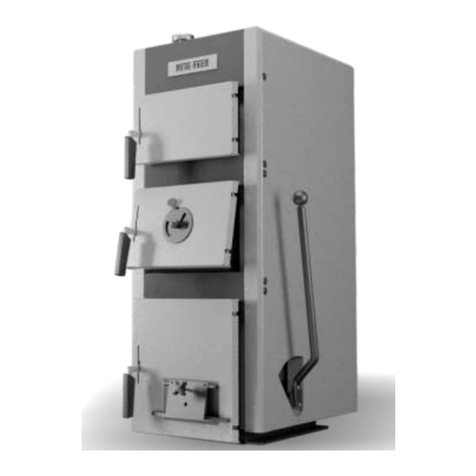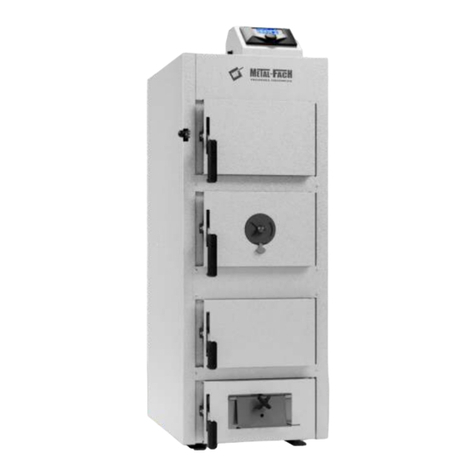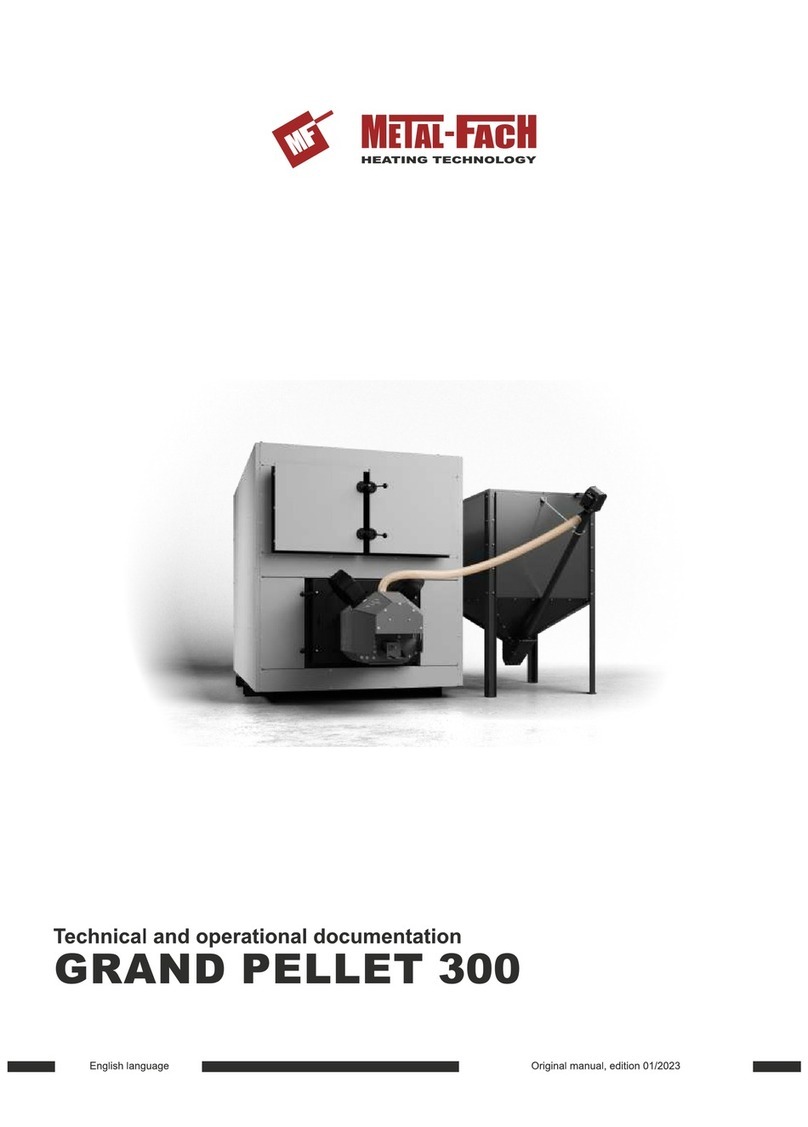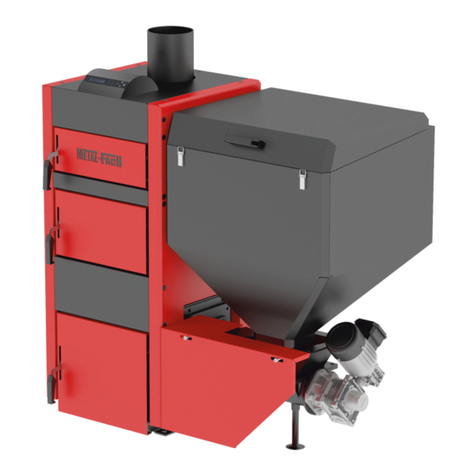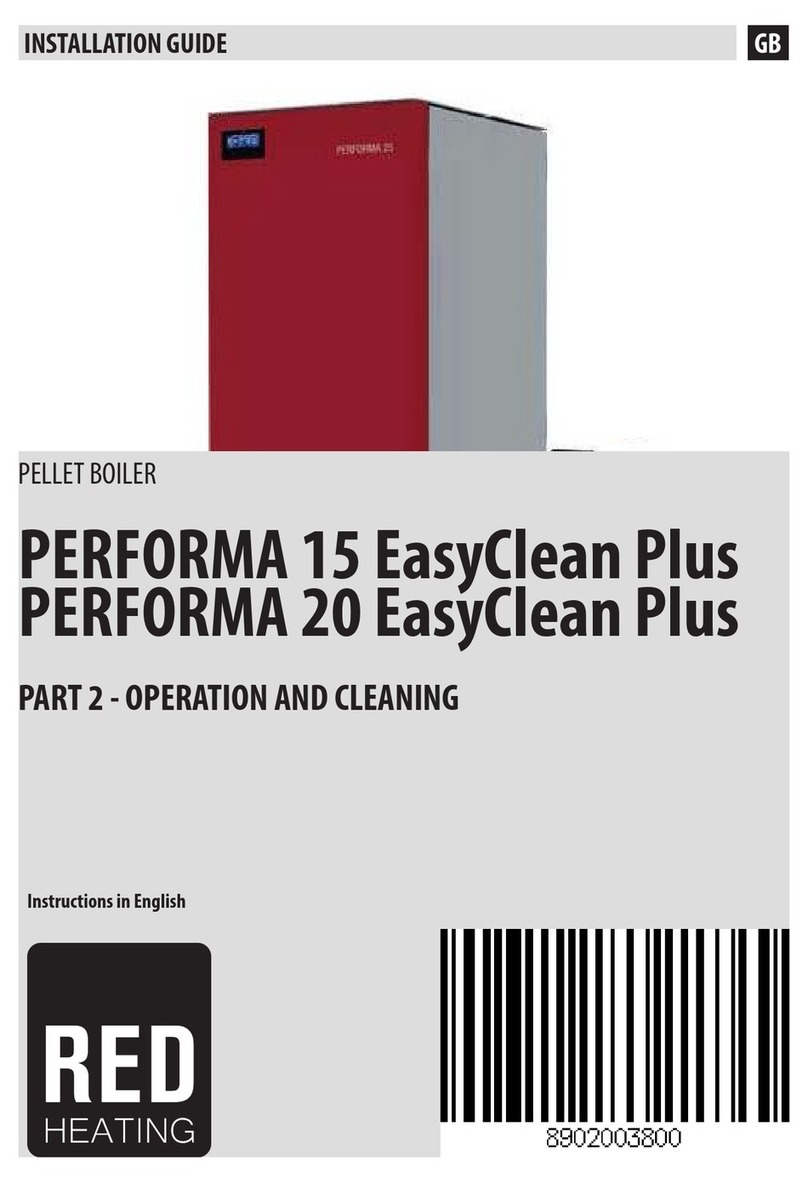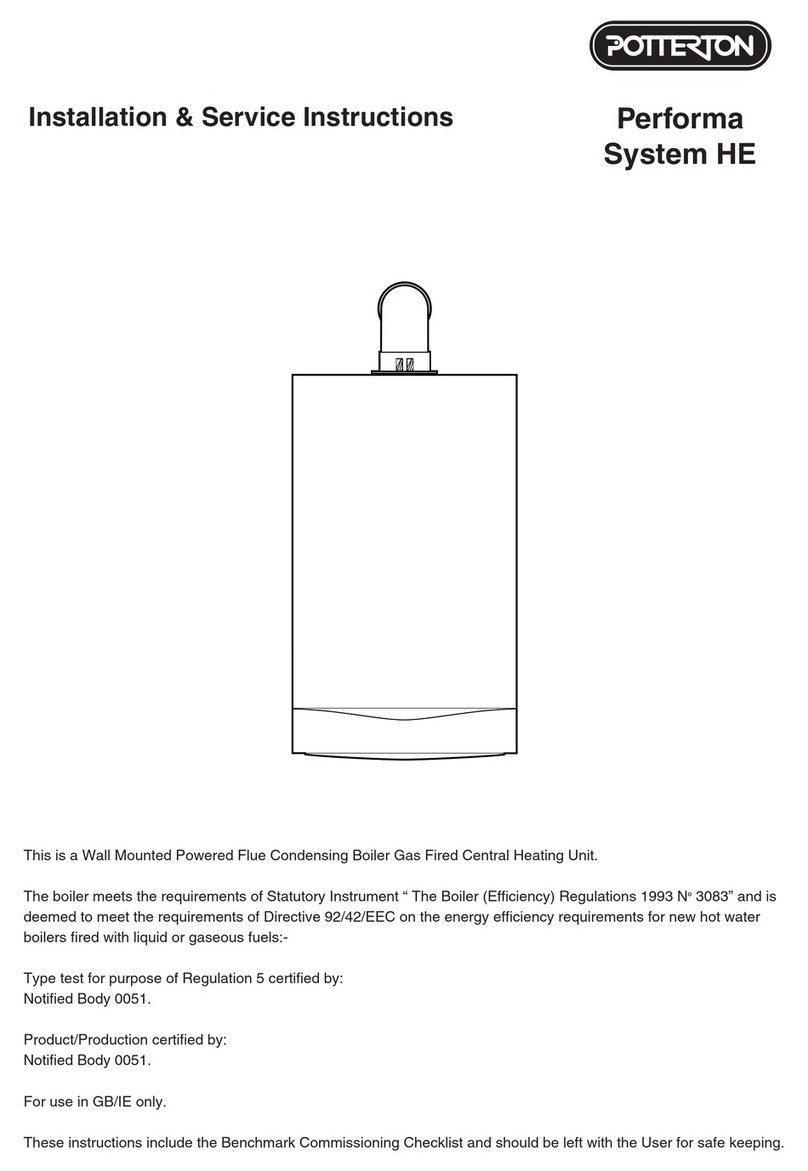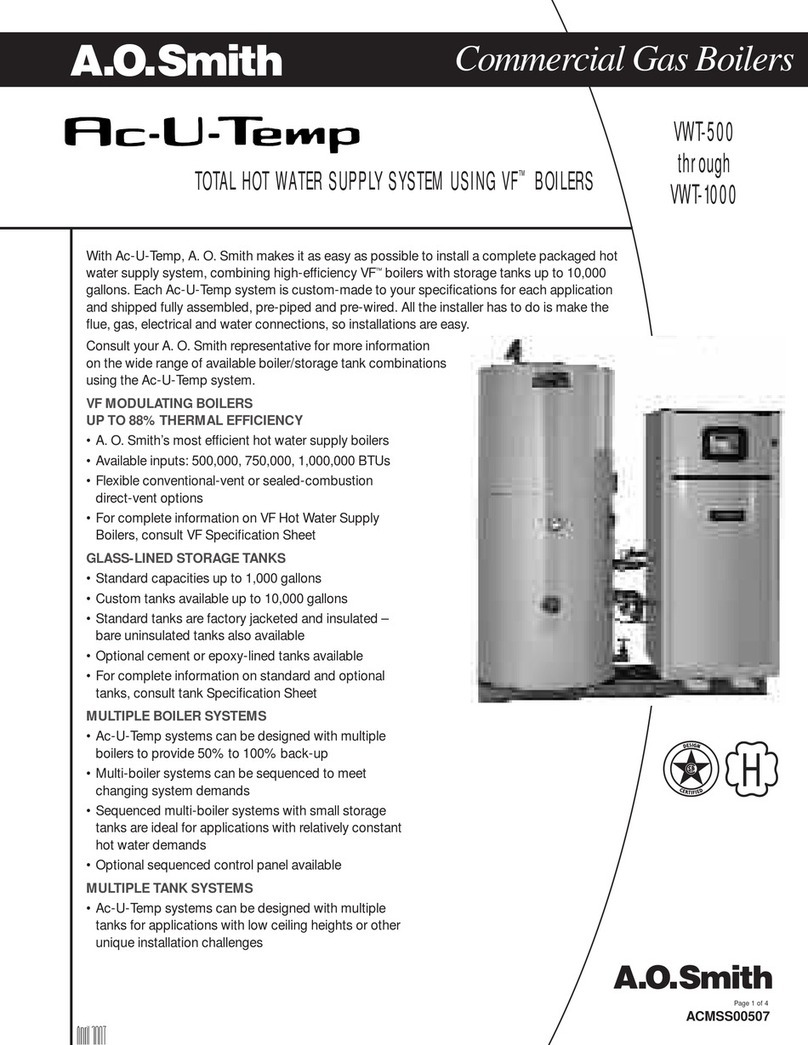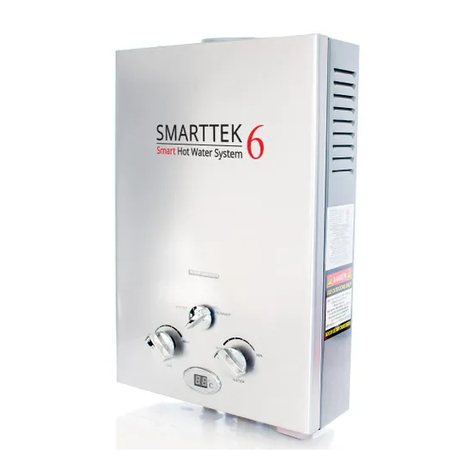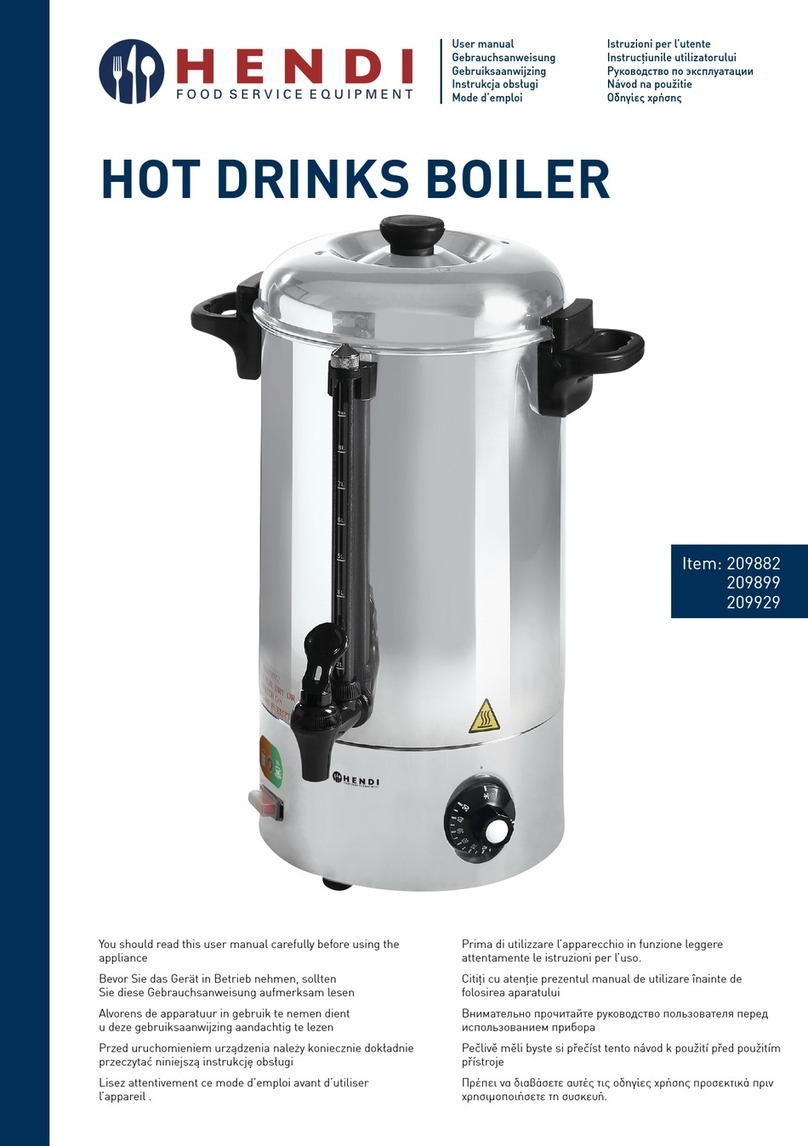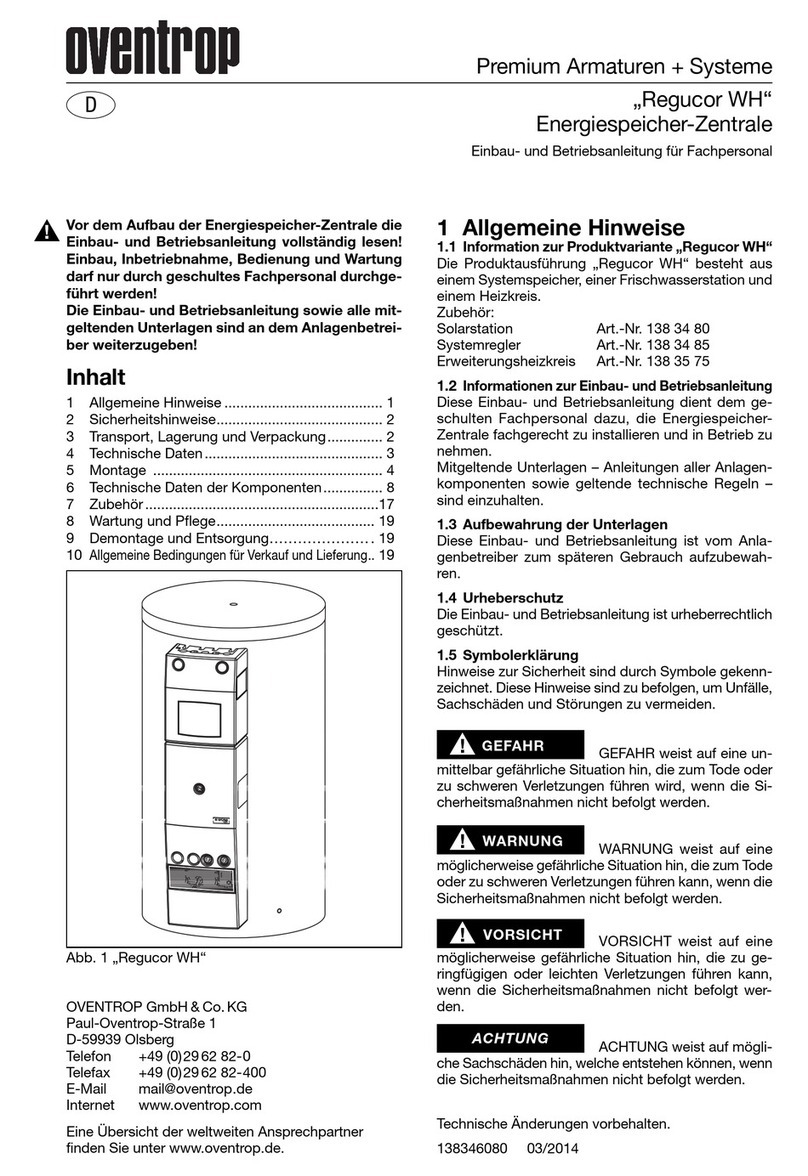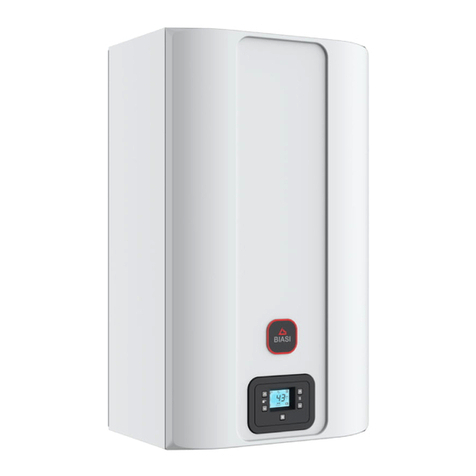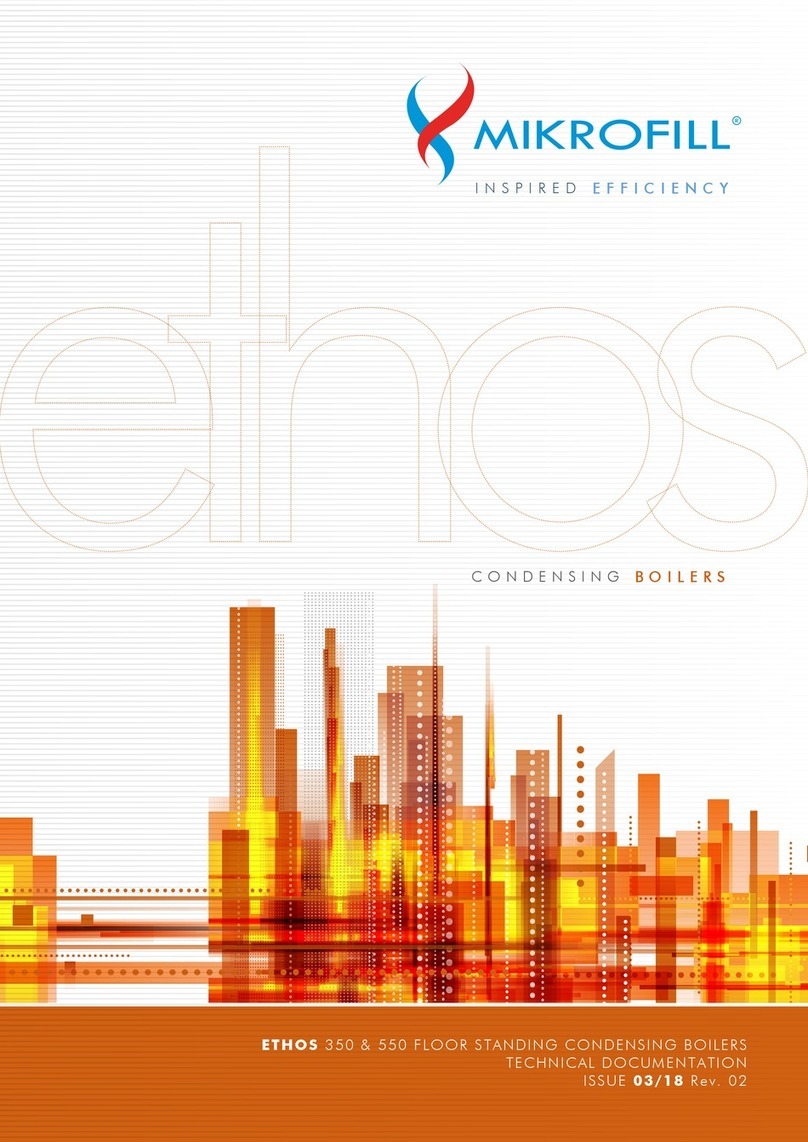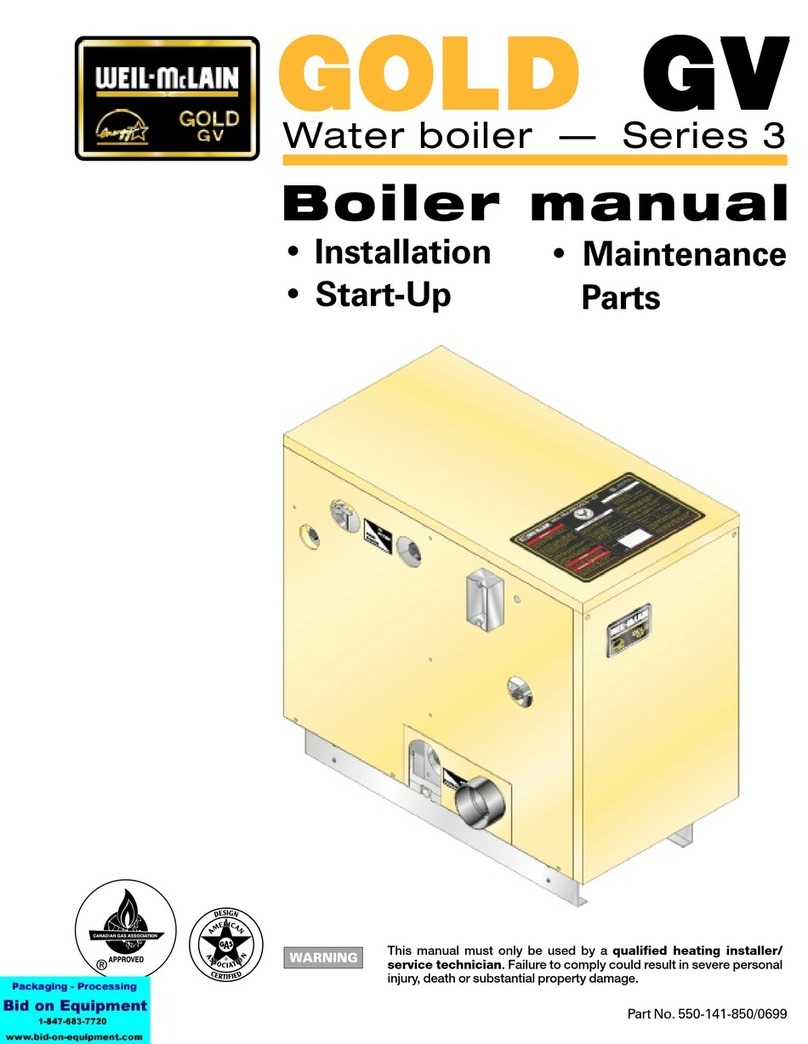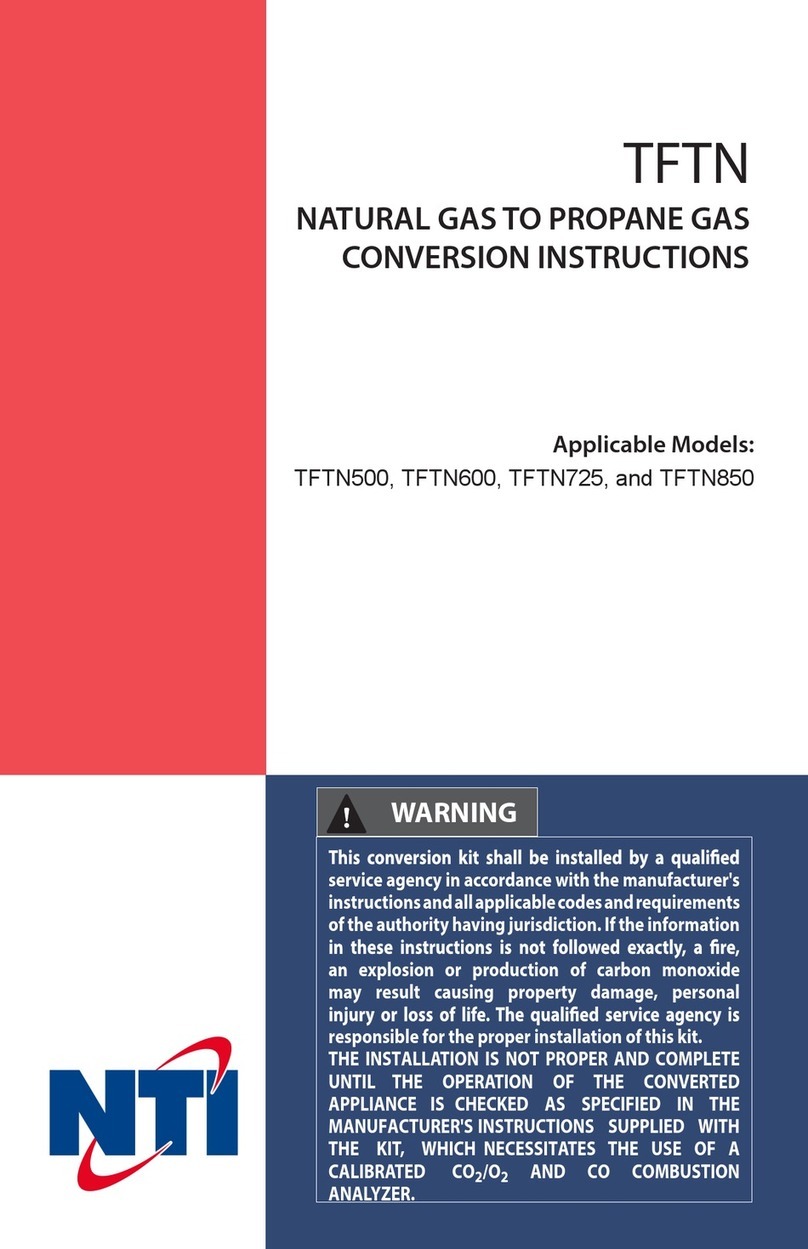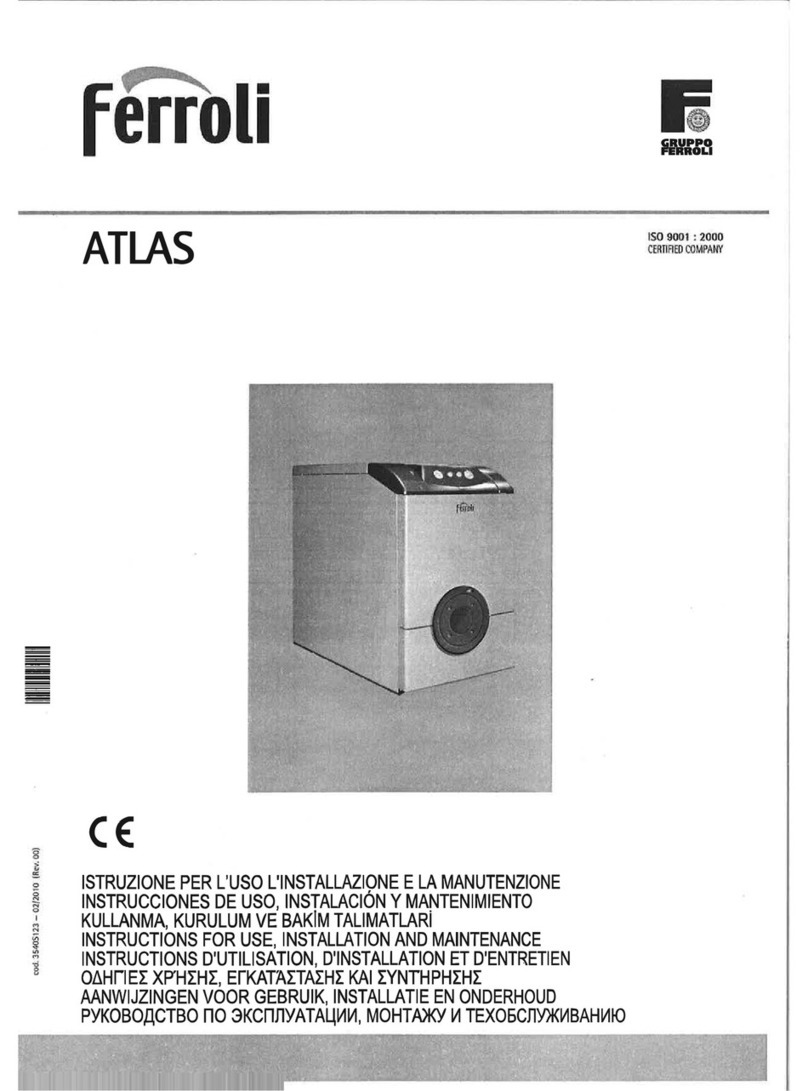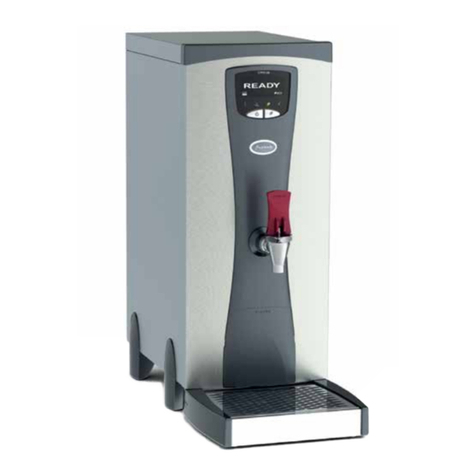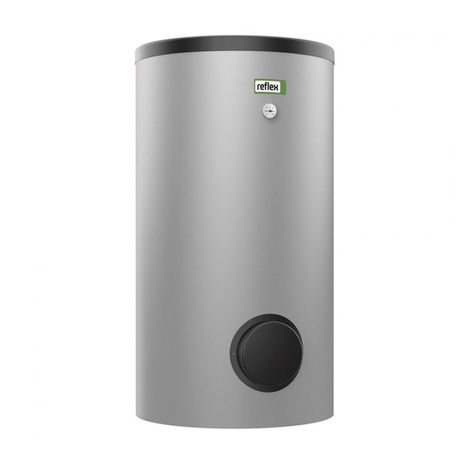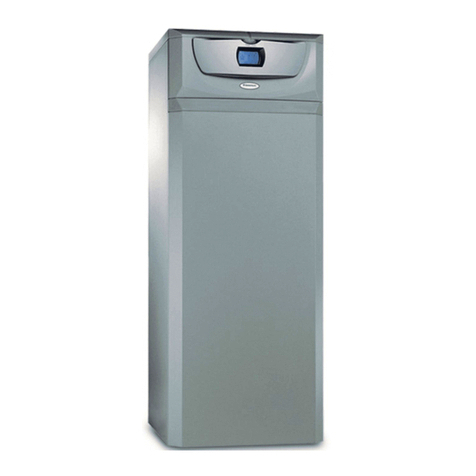
15
18. Start-up of the boiler
(USER/INSTALLER)
Before starting to light a fire in the boiler, check if the central heating system has been made
correctly and if it is filled with water correctly - until it is poured out of the overflow pipe in the
collector vessel.
For filling the whole installation or filling up the cavities, softened water/chemical treated
water, distilled water or rainwater would be most suitable.
In addition, it should be checked whether the grate is cleaned of unburned fuel, ash and slag
from the previous burning and whether the ash has been removed from the ashtray.
Recommended firing (correct - from the top) - the prepared grate deck should be filled with
fuel, (when burning wood - full filling - to the bottom edge of the filling, the clearing should be laid
across the boiler) ...place a layer of heating, (paper, wood chips) on the surface and set it on fire.
We start up the boiler with the ajar flap of the primary air dispenser placed in the lower door
(scaffolding and ashtray door) and with the secondary air damper open in the charging door.
Boiler operation in the upper combustion system takes place in a system with cyclic fuel
filling, which means that after a complete burnout of a portion of fuel filled into the combustion
chamber and removing the ashes from it, the chamber is filled up again and a new portion of fuel
is burned using the heating fuel.
We do not recommend firing up the fuel "from below" in backfill boilers of the upper
combustion type.
Before burning up the firing-up layer, make sure that the chimney provides sufficient draught.
The phenomenon of insufficient draught is most often encountered when the boiler is started up
for the first time or when the operation is interrupted for a longer period when the boiler and
chimney have been cooled down. In order to check the chimney draught, a lit wood splash should
be brought close to the air inlet duct with the damper open.
If we find that the flame is not drawn intensively into the boiler, this indicates insufficient
chimney draught.
In this case, before burning a layer of wood, the chimney must be "warmed up" as follows:
Insert a few wood pins into the flue pipe and set it on fire;
maintain the fire until the chimney draught increases (the flame is drawn into the chimney);
after the wood has burnt out, remove the unburnt residue and throw it into an ashtray.
Once the desired water temperature in the boiler is reached, adjust the intensity of
combustion. The intensity of combustion is adjusted by adjusting the adjustment screw of the
primary air dosing flap and by adjusting the secondary air damper accordingly. During normal
boiler operation, it is necessary to check and replenish the fuel periodically in the way specified
above. In case of hard coal, hitting the hook will cause the fuel to slip.
Special caution must be exercised when opening the charging door, as if it is suddenly opened,
explosive gas (degassing products) may be ignited. When opening the door, stand on the side of
the boiler, tilt the door slightly, wait for a while until the flue gases are discharged from the fuel
tank will give off the chimney, and then slowly open it completely. Also then do not stand in front
of the door opening. The same procedure should be followed when opening the remaining door
while the boiler is running.
ATTENTION!
If for any reason there is a lack of water in the boiler-network system, do not
top up with cold water. Cool down the boiler as soon as possible to 30°C and
only after the boiler has cooled down, top up with water and start burning
again.
ATTENTION!
The inflow of cold water to the boiler walls when they are hot (ignited) may
result in the explosion of the boiler and consequently in the destruction of
heating equipment. In extreme cases it can cause damage to buildings and
injury to people.
When a cold boiler is started up or for the first time, the phenomenon of "boiler sweating" may
occur. This gives the impression of a leakage. In this case an intensive burning process (70-80ºC)
should be carried out to dry and heat up the boiler and chimney duct even for 2-3 days.
To increase the life of the boiler it is recommended to maintain temperature
180ºC of the flue gas above the ambient temperature and the boiler water temperature should
not be lower than 60ºC.
Maintaining a sufficiently low temperature in the radiators in this situation in the autumn or spring
period can be achieved, among others, through
Correct selection of the boiler to the size of heated rooms;
Using three- or four-way mixing valves, controlled manually or automatically, between water
supply and return.
Incorrect warming (insulation) of the expansion (overflow) vessel can also cause a boiler
explosion with all negative effects.
Water frozen in the expansion vessel interrupts the connection between the central heating
system and the boiler and the atmosphere, and when the boiler water temperature rises, an
uncontrolled increase in pressure in the system takes place, which in turn can lead to a boiler
explosion.
ATTENTION!
Do not stand in front of the boiler when opening the door, burns may occur.
19. When using the boiler, remember
(USER)
The boiler may only be operated by adults who have read the operating instructions;
It is forbidden to stay near the boiler for children without adult presence;
If flammable gases or vapours get into the boiler room or during operation, during which
the risk of fire or explosion is increased (gluing, varnishing, etc.), the boiler must be
switched off before starting this work;
When cleaning the carbon in the retort, gutter, the boiler must be switched off ("OFF"
position);



























